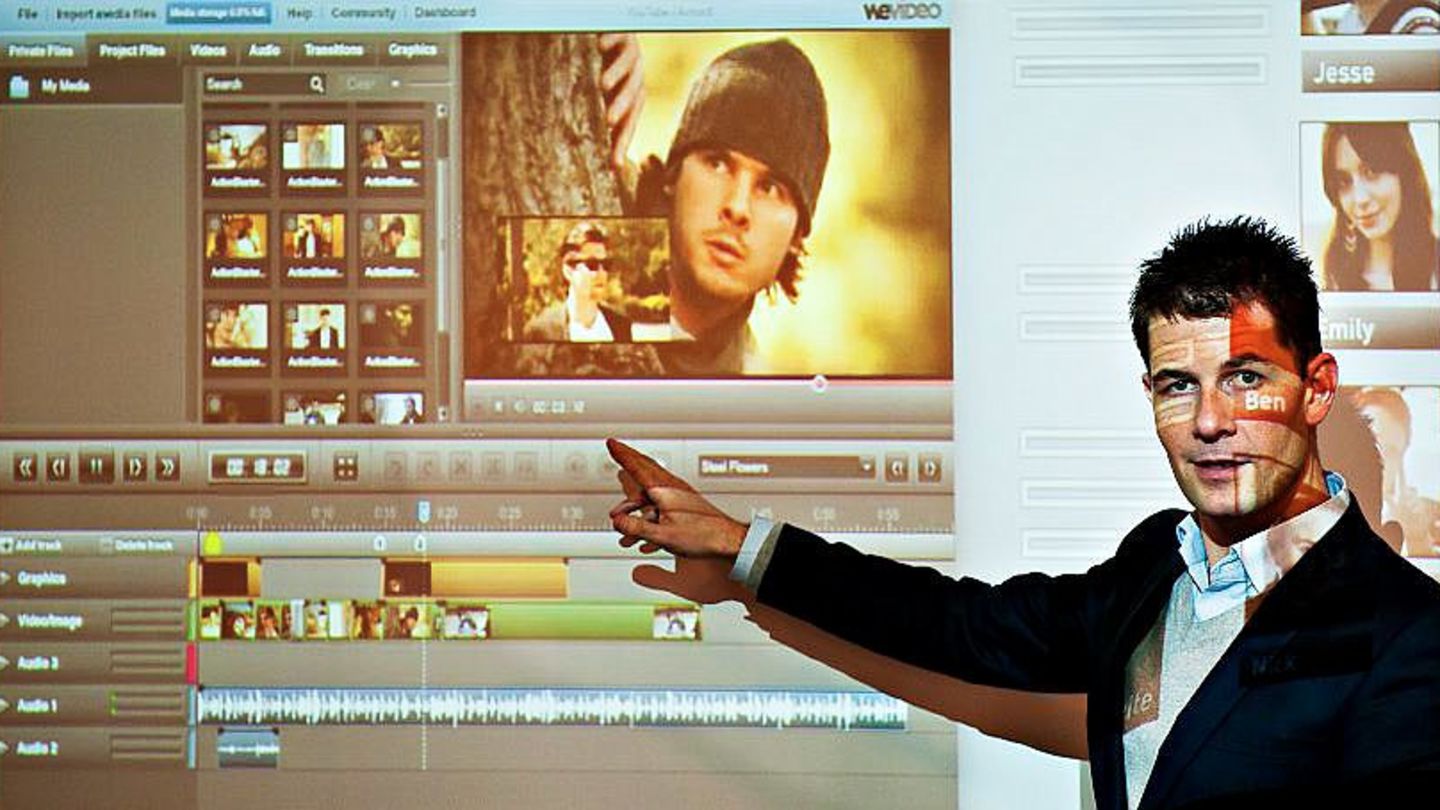 How do students respond to the challenge of making stuff in class, rather than commenting on stuff in your usual group interactions? What happens when you ask them to express themselves differently, and together? Exploring new formats for student interaction – also known as collaborative learning?
How do students respond to the challenge of making stuff in class, rather than commenting on stuff in your usual group interactions? What happens when you ask them to express themselves differently, and together? Exploring new formats for student interaction – also known as collaborative learning?
At our World Learning Summit in June 2016, WeVideo presented their tool for cloud-based, collaborative video production. They were with us at our Stanford University conference in May 2015, as well. And today, we got the chance at the University of Agder to spend a full day exploring the challenge of video-based, digital storytelling.
As a company, WeVideo now has 15 million users worldwide, making them one of Norway´s true success stories in terms of EdTech and international application. That story is a fun one all to itself. Not many Norwegian companies succeed at South By Southwest, attain a working relation with Disney and also obtain a preferred partner relation with Google. We will want to tell that story some time, but not here:
In the workshop today, a group of students from a neighboring university college doing Global journalism, met with our own students from Global development and planning, as well as our MA students i Social communication. Two members from the University of Agder Media center joined for the entire day. One PhD student and one Postdoc student from the Department of global development and planning spent the day exploring digital storytelling.
—
What is a good story? Without a sense of the good story, no education technology anywhere will help you. Technology is not the key, but are potential tools – used right. But what is right? What creates engagement? What makes for a narrative that draws an audience in? What are the challenges and what are the pitfalls? The AM session this morning was spent on these kinds of questions.
How does one create a video when one has no prior experience? Learning the tools seem like a daunting task. And yet, within 3, 5 hours, 5 working groups with three members each, had mastered sound, still photography, video, light and layer editing. Each group producing one video, the workshop ended with a show of all the videos and joint reflection on whether the idea behind the stories came through — what could have been done differently?
—
My sense was this: As a university lecturer you are compelled to explore new ways and means of engaging with students, simply because the manner in which students learn, is changing. A key challenge is then to find the tools that are relevant enough and sufficiently easy to learn in order for people with little tech savvy to actually try them out in the first place. The threshold often seems high.
I was amazed at the simplicity of the tools, but more importantly; by the end of the day I was convinced that this kind of engagement that we saw, comes from students that are being enabled to pursue knowledge in ways that offer new and different challenges, leading them to really think through what it is that they want to say — and how.
Added to this, the quality of the stories took me by surprise. If this is the standard, then I believe educators like myself are in for one surprise after the other in years to come. Educators, too, are faced with the challenge of clarity and brevity when formats are no longer 2 x 45 minutes spontaneous combustion in class.
I understood things myself that I had not expected to, simply because the student voice came off rather differently than what I had expected. When students are allowed to voice their stories in media formats that they know and use in daily life, things happen. The Snapchat and Facebook generation can do things my generation could not — and for sure, we could do things these students can´t, as well. My generation studied differently. We did not have the world at hand, through stupidly ubiquitous media.
I will not give up the lecture, for sure. But maybe do more of this, as an add-on?
No matter: Video is an educational tool for the future. And I was happy to see that the leader of my own university media center took this in, sharing that opinion with me.
Looking forward to the next chapter.
